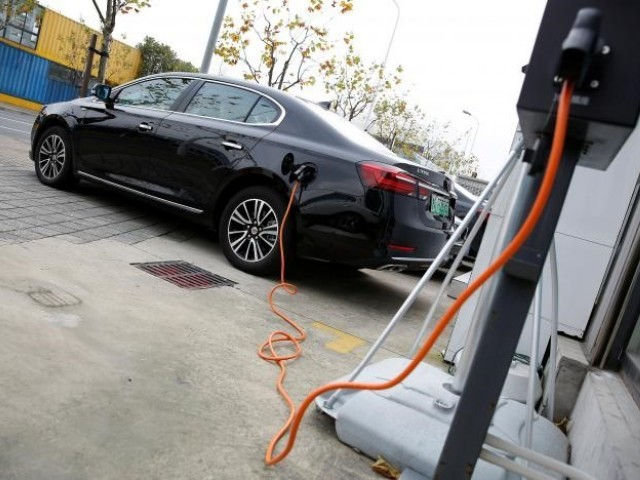
SINGAPORE: Singapore has planned to set up a pilot city on an island where it will run driverless electric cars, trucks and buses in a bid to switch from gasoline and diesel to ensure clean environment and fuel savings.
To implement the plan, the government of Singapore has allocated a piece of land to the Energy Research Institute in Semaku island. Until now, power producers have been dumping waste on the island.
"This will be a test case to run cars, buses and trucks without drivers in a city planned on an Island," said Dr Anshuman Tripathi, Programme Director Future Mobility System Energy Research Institute Singapore, while talking to The Express Tribune.
Tripathi revealed that the project was being launched in partnership with the Singaporean government. Eleven smart grids have been set up on the island and first phase will be completed next year. Investors will also be invited to pour money into this project.
He said the regulatory body of Singapore would issue licences to different companies for running their transport services in the island.
Around 27 driverless buses are already running in the port area, but it is difficult to run these vehicles as public transport in other parts for fear of accidents.
Separately, addressing an international conference on Innovative Smart Grid Technologies (ISGT Asia 2018), sponsored by the IEEE Power & Energy Society, Tripathi said clean transport connectivity was the main theme behind electrifying the vehicles.
However, there were some challenges like how small grids would afford the withdrawal of electricity. Car manufacturers, he said, would also face problems as some cars would have slow charging batteries while others would have fast charging batteries.
Customs duty on import of electric cars cut to 25%
He pointed out that batteries were not available for a second life, adding they could try to recycle batteries, but technology had not yet been fully developed at this stage.
He estimated fuel savings of 44%, 56% and 41% respectively if private and public vehicles and taxis were switched from fuel to electricity. Power Research and Development Consultants Limited India Managing Director Dr R Nagaraja said India had set a target of adding 175 gigawatts of renewable energy by 2022.
Power generation in India through wind and solar energy sources stood at 32.96 gigawatts and 19.5 gigawatts respectively by March 31, 2018.
German minister to carmakers: Invest in electric cars or lose out
However, Nagaraja saw challenges in the way like accurate forecasting, extra burden on generation and sensitive weather for renewable energy. He called the storage of electricity and tariff structure a must for the transport sector.
He disclosed that the UK had planned to have only zero-emission cars on roads by 2040. China is also committed to banning the use of gasoline and diesel in cars. However, it has not yet set a timeline.
He said the idea of electrifying highways and airports was also being discussed, adding power market services and infrastructure coupled with navigation systems would also require electric vehicles.
Uber rival Ola to add 10,000 electric three-wheelers in India
Head of New Production Development Distribution Division Tenaga Nasional Berhad Malaysia, Nirin Der Singh Jottl, emphasised that the market required a business model for electric vehicles and energy storage. He suggested that customers should be encouraged to add power through solar panels, adding solar energy could be supplied to electric vehicles at an agreed tariff. The regulator would have to set the tariff whereas electric vehicles could be charged through smart payments, he said.
Published in The Express Tribune, May 26th, 2018.
Like Business on Facebook, follow @TribuneBiz on Twitter to stay informed and join in the conversation.



































































COMMENTS
Comments are moderated and generally will be posted if they are on-topic and not abusive.
For more information, please see our Comments FAQ